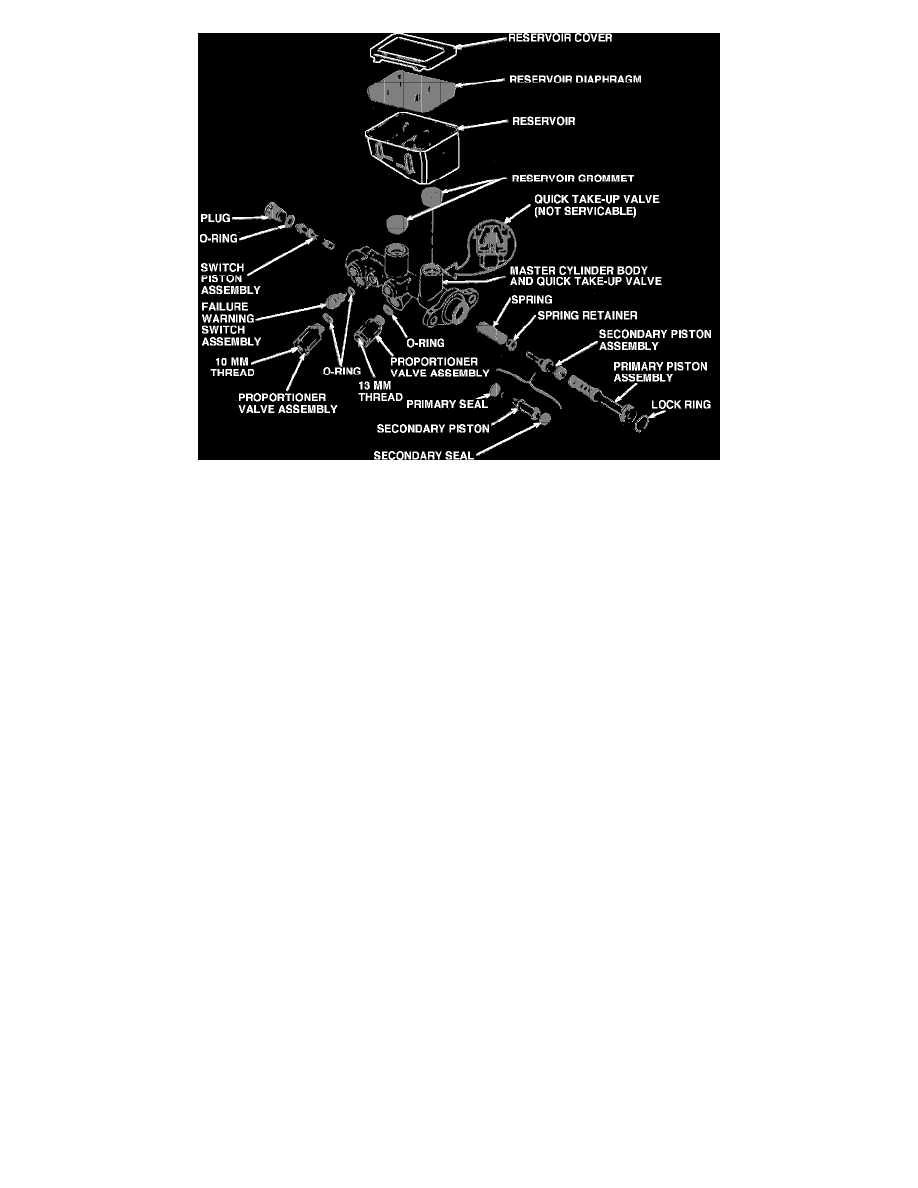Ninety-Eight FWD V6-181 3.0L (1985)

Fig. 25 Delco-Moraine dual master cylinder with quick take-up feature
An array of dual master cylinders are shown, Figs. 17 and 21 through 25. With cylinder removed from vehicle, and from brake booster if so
equipped, remove the covers and disassemble the unit as suggested by the illustration of the unit being serviced.
Some later models with aluminum master cylinders and low drag calipers, incorporate a quick take-up feature, Fig. 25. Upon initial brake applications,
this feature provides a large volume of fluid to the wheel brakes. The low pressure fluid provides the displacement requirements created by the front
caliper seal retracting pistons and the rear drum brake shoe spring retraction, thereby providing a high pedal. The quick take-up valve is not serviceable
and can only be replaced.
When disassembled, wash all parts in clean brake fluid only. Use an air hose to blow out all passages, orifices and valve holes. Air dry and place parts
on clean paper or lint-free cloth. Inspect master cylinder bore for scoring, rust, pitting or etching. Any of these conditions will require replacement of the
housing. Inspect master cylinder pistons for scoring, pitting or distortion. Replace piston if any of these conditions exist.
If either master cylinder housing or piston is replaced, clean new parts with clean brake fluid and blow out all passages with air hose.
Examine reservoirs for foreign matter and check all passages for restrictions. If there is any suspicion of contamination or evidence of corrosion,
completely flush hydraulic system as outlined below.
When overhauling a master cylinder, use all parts contained in repair kit. Before starting reassembly, dip all cups, seals, pistons, springs, check valves
and retainers in clean brake fluid and place in a clean pan or on clean paper. Wash hands with soap and water only to prevent contamination of rubber
parts from oil, kerosene or gasoline. During assembly, dip all parts in clean brake fluid.
Inspect through side outlet of dual master cylinder housing to make certain cup lips do not hang up on edge of hole or turn back, which would result in
faulty operation. A piece of 3-16 inch rod with an end rounded off will be helpful in guiding cups past hole.
When overhauling late model aluminum master cylinders, carefully inspect master cylinder bore for corrosion. If corroded, replace master cylinder.
Do not hone or use abrasives on the bore of these cylinders.
